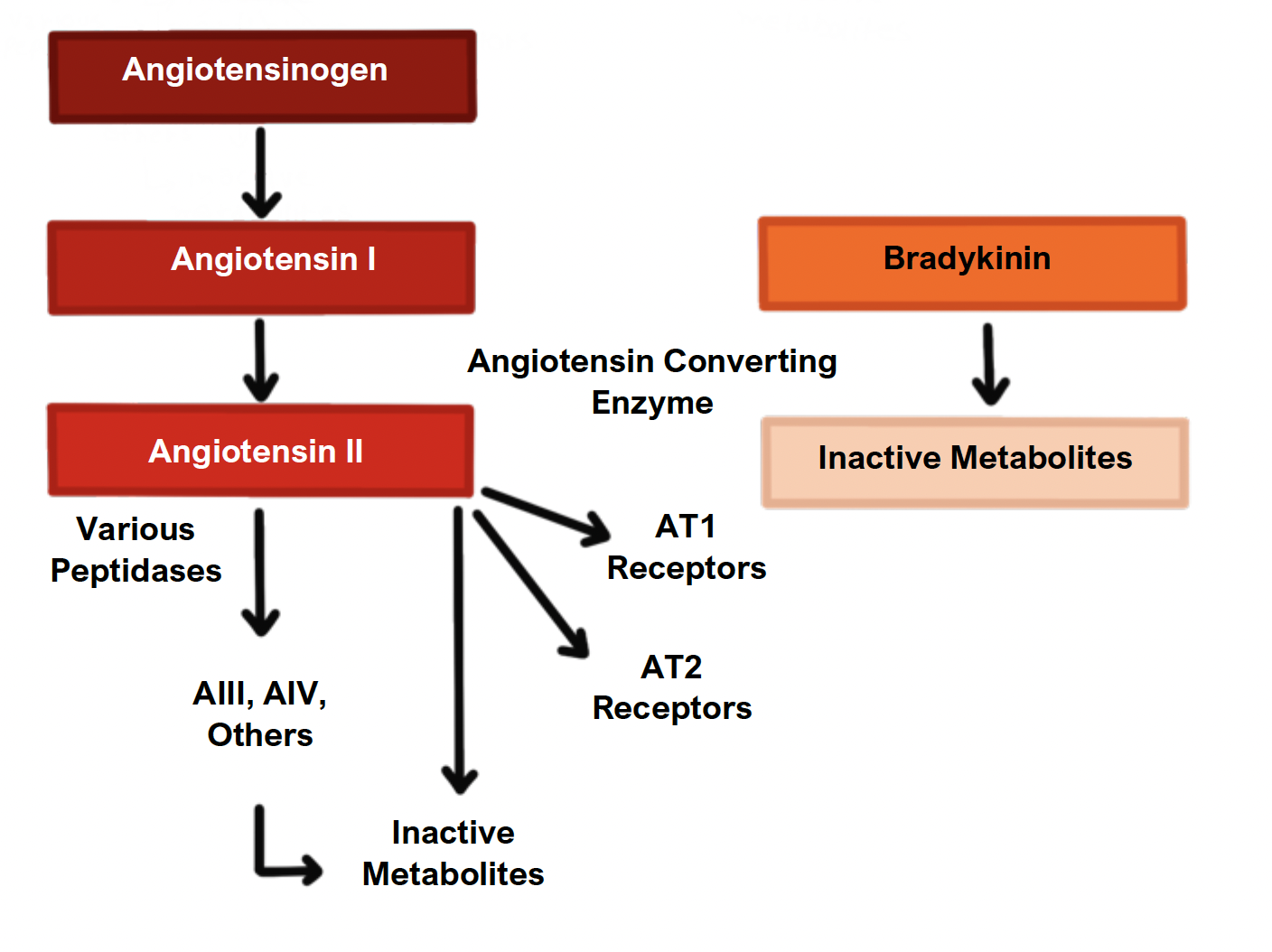ACE Inhibitors / ARBs
The renin-angiotensin system (RAAS) is activated in several cardiovascular pathologies – therefore these drugs aim to inhibit the body’s natural compensatory response by blocking the RAAS system.

ACE inhibitors – Ramipril, Lisinopril
These inhibit angiotensin converting enzyme (ACE) which converts angiotensin I to angiotensin II.
They also stop the breakdown of the vasodilator bradykinin.
This results in venodilation and natriuresis, which helps to reduce cardiac preload and afterload and hence they are used to treat chronic heart failure.
ACE-inhibitors should be avoided in pregnancy and breastfeeding.
Side effects
– Hypotension, particularly with the first dose
– Renal impairment and hyperkalaemia, which can potentiate arrhythmias
– Persistent dry cough, due to bradykinin build up
– Angioedema, this may be delayed, and has a higher incidence in Afro-Caribbeans
Angiotensin II receptor antagonists – Candesartan, losartan
These drugs block the action of angiotensin on AT1 receptors, which is usually responsible for vasoconstriction and aldosterone synthesis.
They cause vasodilation and a reduction in blood pressure.
They are used if ACE inhibitors are not tolerated (usually because of the dry cough).
They are as effective in reducing blood pressure as ACE inhibitors.

Side effects
– Similar side effects and contraindications as ACE-inhibitors but no dry cough
Renin Antagonists – Aliskiren
This is a direct renin inhibitor utilised in the treatment of hypertension.
Disclaimer




